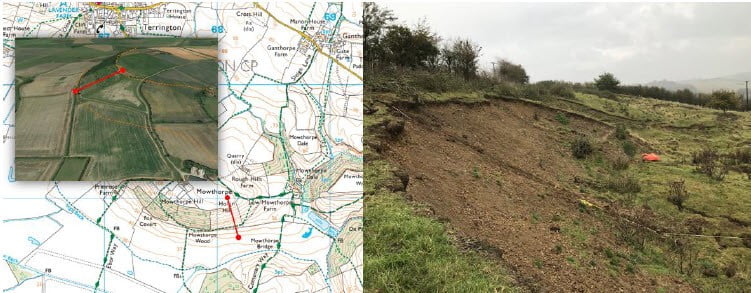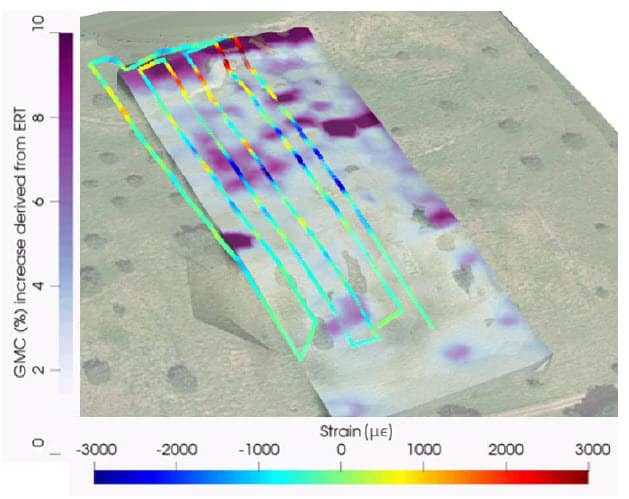Introduction
OptaSense has published a revolutionary white paper on the application of Rayleigh Backscatter Sensing to provide three measurement streams in parallel in real time from the same device: Distributed Acoustic Sensing (DAS), Rayleigh Distributed Temperature Sensing (RDTS) and Rayleigh Distributed Strain Sensing (RDSS).
Focusing on a year of work with the British Geological Survey (BGS) at a National Landslide Laboratory in the UK the work demonstrates the accuracy of the technique and at the same time illustrates the benefit of having thousands of channels of data that can offer a milli-Kelvin and micro-Strain sensitivity without averaging in real time – all the time. All of this is achieved in parallel with full spectrum acoustic data opening the door to passive time-lapse seismic imaging. Together these techniques can deliver enhanced knowledge of the internal and surface state of earthen assets such as levees, dykes and dams over great distances.
The full paper is available on request to interested parties from contact@optasense.
Executive Summary
Hollin Hill in North Yorkshire in the UK is a naturally occurring landslide laboratory where in conjunction with significant rainfall the main constituent layer is weakened causing destabilisation and annual landslide. The predictable behaviour has led to significant academic study and investment in instrumentation over the last decade.

A large section of the hill has been instrumented with a DRS system capable of separating temperature, strain & acoustic measurements, via multiple fiber transects with the aim of realising additional valuable information alongside a suite of traditional sensors including Electrical Resistance Tomography, Tiltmeters, LIDAR, high resolution GPS and Synthetic Aperture Radar.

The analysis of long-term data illustrates the massive potential of this form of sensing:
• Full hillside strain and temperature data in every 1 metre section of fiber
• No averaging required to achieve real time ~mK and µ sensitivity
• The ability to resolve data over multiple timescales and sensing scales resolves new and unexpected phenomena
• System can not only accurately resolve the build of strain in the hillside and spot movement events but probe the response of the hill to movement and sometimes before
• Strong correlation with all monolithic sensors verifies the fundamentals of the approach.

Download Our Executive Summary
or contact us for the full paper at [email protected].
ERT Imagery and material cross sections are courtesy British Geological Survey.

